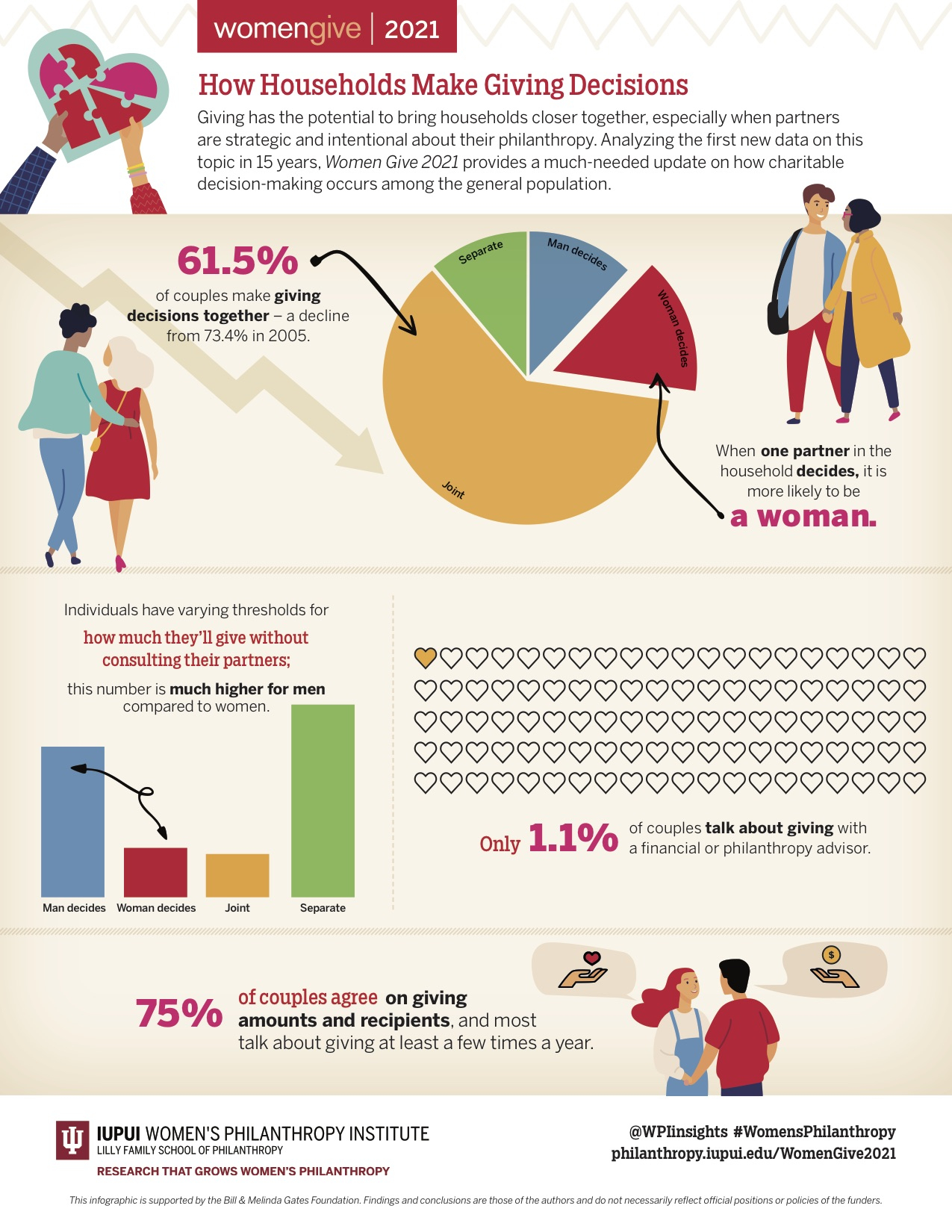What is Giving Compass?
We connect donors to learning resources and ways to support community-led solutions. Learn more about us.
Search our Guide to Good
Start searching for your way to change the world.
Who decides about charitable giving in households? Researchers have asked this question for decades, but over the last year as the Women’s Philanthropy Institute has sought to add to this topic, the world has seemingly turned upside-down. Households across the U.S. and around the world continue to grapple with multiple overlapping crises: the COVID-19 pandemic, the resulting economic downturn, political turmoil, a renewed movement for racial and social justice, and the ever-present threat of climate change.
In the midst of these crises, longstanding demographic and economic trends are shifting. Women’s labor force participation, which had been on the rise for decades, has plummeted during the “she-cession” that forced countless women out of their jobs in the wake of COVID-19. Will women regain their economic power as the pandemic wanes? Will charitable giving remain strong during this time of economic difficulty? The future remains uncertain. At the same time, gender equity is a central issue confronting society; as a result, charitable giving is an important topic, since women’s roles around charitable giving decisions have transformed in recent decades.
Amid this backdrop, Women Give 2021 examines how households make charitable decisions. It places charitable decision making in context with other financial decisions that couples make, and explores how these decisions relate to the amount couples give. It unveils new information about how these conversations about giving take place, and whether couples are happy with their decision-making processes.
The question of “who decides?” matters because most charitable giving in the U.S. comes from individuals and families, whose giving has accounted for at least 70% of all charitable giving over the last 40 years. Each household is unique and has different conversations about giving; this has real-world implications for how much households give, and to what causes and organizations.
Women Give 2021 builds on a body of research on gender differences in giving. When individuals form couples, those women and men bring different motivations, preferences, and resources together to their conversations about giving. What do these conversations look like? Do different partners have more influence in these decisions? Are couples satisfied with their conversations about giving? In this era of adjusting to a “new normal,” this study addresses these questions and more to help donors and practitioners better understand how household dynamics affect giving.

Categories:
- North America
- Women's Philanthropy
- Philanthropy Research